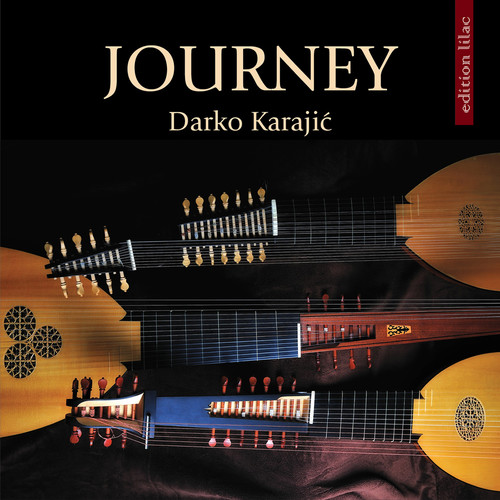
Journey
About the Composers:
Johannes Hieronymus Kapsberger (ca. 1580-1651) was born in Venice into a family of German aristocrats. In 1604 he moved to Rome, at the time a center of early Baroque music. Along with Frescobaldi and Macoci he entered the service of Cardinal Barberini, the nephew of Pope Urban VIII. A very famous composer even in his own day, he published 32 volumes of works in various genres, greatly surpassing the standards of his age.
Alessandro Piccinini (1566-ca. 1638) was born in Bologna into a musical family. During his stay in Ferrara in 1594, where he met prince Gesualdo di Venosa and the composer Giulio Caccini, he held an appointment at the Este Court. In 1597 he moved to Bologna in order to enter the service of Cardinal Pietro Aldobrandini, the papal legate to Bologna and Ferrara. He left two volumes of lute music, ‘Intavolatura di liuto et di Chitarrone, libro primo’ (Bologna, 1623) and ‘Intavolaturo di liuto’ (Bologna 1639), containing valuable playing instructions.
Robert de Visée (ca. 1655-1732/33) was a well-known French theorbist, guitarist and lute player, and certainly one of the greatest musicians of French Baroque. He followed in the tradition of some of the most prestigious lute schools in XVII century France, where the lute was considered the most elegant of instruments due to the tenderness of sound, number and harmony of strings, its range, tuning and difficulty of playing. He spent most of his life in Paris and later in Versailles, where he studied guitar with Francesco Corbetta. Visée was held in high esteem by his student and heir to the French throne, the future King Louis XIV.
Giovanni Zamboni Romano (1664-1721) was born in Rome at a time when lute playing achieved its full and final blossoming. Information regarding his life remains surprisingly scant. However, from the writings of Ranieri Busoni, a prebendary from Pisa, collected over the period from 1647 to 1717 and published as Miscellaneous Recollections, we learn that Zamboni was employed at the chapel of the Prince's Cathedral in Pisa. The same source tells us that he was a master of counterpoint, a virtuoso on the theorbo, lute, harpsichord, guitar, mandolin, mandola, as well as a skilled smith of oriental jewelry.
Sylvius Leopold Weiss (1686-1750) was the most prominent German lutist, perhaps even the greatest lute player ever. His students, colleagues and contemporaries engraved his tombstone with the words “Let only Sylvius play the lute.” As a lute player, he was well respected and sought after by aristocrats and crown heads throughout Germany. The high quality of Weiss' composing and his spiritual kinship with Bach's music (with whom he was on friendly terms, paying him visits in Leipzig), represent the typically German symbiosis of the French and Italian styles. Weiss' career coincides with a late flourishing and development of lute playing, which he was able to incorporate into his own work and defend from corrupting influences that had already begun to erode the lute's high artistic status.
About the Artist:
Darko Karajić completed his studies at the Zagreb Music Academy under professor István Römer. He obtained his Masters and DMA degrees at the Faculty of Music in Belgrade under the mentorship of Vera Ogrizović. His involvement with early music began with the ensemble Musica Antiqua in 1985, and continued with the ensemble Renaissance in 1991. Darko Karajić is the founder of the ensemble Anonimus, which focuses in the authentic performance of Western European Baroque music, and the ensemble Levant, which explores Byzantine and Medieval music. He also performs with early music ensembles Minstrel (Zagreb), Belgrade Baroque Soloists, Studio for Early Music, and others. He is on the faculty of the Belgrade Music Academy.
